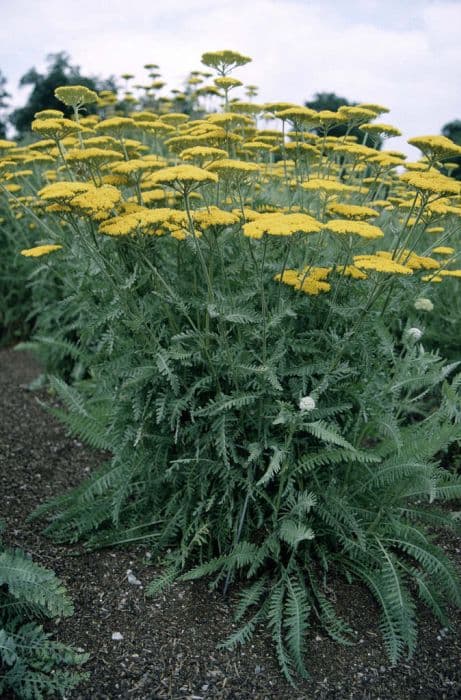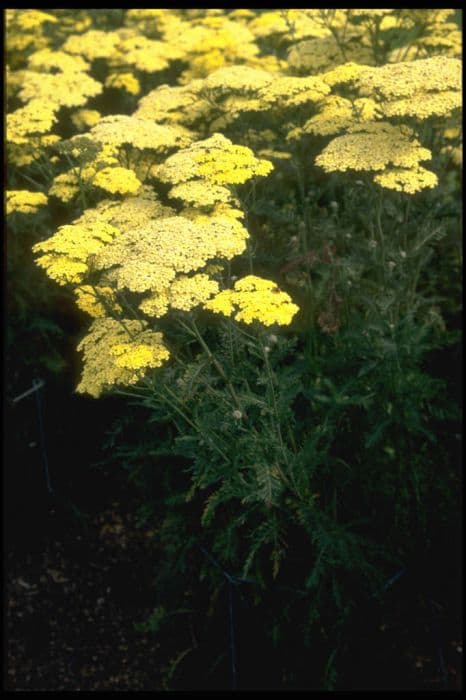Mexican Flame Vine Pseudogynoxys chenopodioides

ABOUT
Commonly known as Mexican flame vine, this vibrant plant is a feast for the eyes due to its strikingly colorful flowers. The blooms are a fiery orange to scarlet hue, typically characterized by multiple daisy-like flower heads. The center of each flower head has a contrasting yellow to orange disc, which is surrounded by slender, vibrant petals radiating around it, much like rays of sunshine. The foliage of the Mexican flame vine is equally lush and adds to the overall aesthetic of the plant. Leaves are bright green with a somewhat glossy appearance, teardrop-shaped, and can have slightly serrated edges. They are arranged alternately along the stems, creating a dense and bushy appearance. As the plant matures, it develops a climbing habit, often using tendrils to grasp onto supports and structures around it. This growth allows it to cover walls, fences, and trellises, creating a tapestry of greenery interwoven with vivid floral accents. The stems themselves are semi-woody and can become quite robust as the plant grows. Overall, the Mexican flame vine is a striking and ornamental plant that is sure to attract attention and bring a splash of warm color to any setting where it is grown. Its ability to flower profusely and its vibrant color palette make it a popular choice for gardeners looking to add a tropical touch to their landscapes.
About this plant
 Names
NamesFamily
Asteraceae
Synonyms
Orange Glory Flower, Mexican Flame Vine, Orange Creeper, Sunset Flower
Common names
Senecio confusus, Senecio magnificus, Senecio chenopodioides.
 Toxicity
ToxicityTo humans
The most common common name for Pseudogynoxys chenopodioides is Mexican flame vine. It's not widely recognized as a poisonous plant to humans, and there is limited information about its toxicity. However, as with many plants, it is possible that some individuals might experience an allergic reaction or irritation if they have particular sensitivities. If ingested, it could potentially lead to gastrointestinal upset or other symptoms, but specific toxic effects are not well documented. As with any plant, it's advisable to avoid ingesting parts of the Mexican flame vine if its effects on humans are uncertain.
To pets
Mexican flame vine may not be commonly known for its toxicity to pets. However, due to the general lack of comprehensive information regarding its toxic properties, it is prudent to prevent pets from ingesting this plant. If a pet were to consume parts of the Mexican flame vine, they might experience symptoms similar to those in humans, such as gastrointestinal upset. Watch for signs of distress or illness in pets, including vomiting, diarrhea, drooling, or loss of appetite, and contact a veterinarian if any of these symptoms are observed. As a precautionary measure, it is generally recommended to keep pets away from plants whose toxicity is unknown or unclear.
 Characteristics
CharacteristicsLife cycle
Perennials
Foliage type
Semi-deciduous
Color of leaves
Green
Flower color
Orange
Height
6-10 feet (1.8-3 meters)
Spread
2-3 feet (0.6-0.9 meters)
Plant type
Climber
Hardiness zones
9
Native area
Mexico
Benefits
 General Benefits
General Benefits- Ornamental Value: Pseudogynoxys chenopodioides, commonly known as Mexican flame vine, adds vibrant color with its bright orange-red flowers, enhancing the aesthetic appeal of gardens and landscapes.
- Attracts Pollinators: The bright flowers attract beneficial pollinators such as butterflies and bees, supporting local ecosystems.
- Low Maintenance: The Mexican flame vine is known for being hardy and requiring minimal care once established, making it ideal for gardeners of all skill levels.
- Drought Tolerance: It is relatively drought-tolerant, which is especially beneficial in arid and semi-arid regions or during water restrictions.
- Rapid Growth: The plant grows quickly, offering fast coverage for trellises, fences, and other structures, which can be advantageous for creating privacy or shading.
- Soil Adaptation: It can adapt to a range of soil types, which makes it suitable for different garden conditions.
- Seasonal Interest: It blooms for an extended period, typically from spring to fall, providing long-lasting interest throughout the growing season.
 Medical Properties
Medical Properties- Anti-inflammatory: Pseudogynoxys chenopodioides has been traditionally used to reduce inflammation.
- Wound healing: Some reports indicate that the plant may be applied to cuts and wounds to promote healing.
- Antibacterial: There is evidence suggesting that Pseudogynoxys chenopodioides possesses antibacterial properties.
- Pain relief: The plant has been used in traditional medicine to alleviate pain.
- Antifungal: Some sources mention its application in treating fungal infections.
- Diuretic: It is sometimes used to promote urine production and relieve fluid retention.
 Air-purifying Qualities
Air-purifying QualitiesThis plant is not specifically known for air purifying qualities.
 Other Uses
Other Uses- Pseudogynoxys chenopodioides, commonly known as Mexican flame vine, can be used as a natural dye, providing a range of colors for fabrics depending on the mordants used.
- The plant's abundance of flowers makes it an ideal choice for creating natural floral displays and arrangements for events and ceremonies.
- Due to its rapid growth and dense foliage, the Mexican flame vine can be employed as a privacy screen in gardens or on terraces.
- The vine can be trained to grow over pergolas or archways, providing not only aesthetic appeal but also shade in sunny areas.
- In regions where it is native, the colorful vine is sometimes used in traditional ceremonies and celebrations as a symbol of vitality and energy.
- The dried stems of the vine can be woven into baskets and other craft items, combining utilitarian function with decorative flair.
- Its dense and fast-growing habit makes it a suitable candidate for use in topiary or living green sculptures in garden design.
- Gardeners can utilize the vine's climbing nature to create living curtains on balconies or patios, enhancing the outdoor living space with its vibrant flowers.
- Due to its extensive coverage, the vine can be used for habitat restoration projects, providing shelter and resources for local wildlife.
- In educational environments like botanical gardens, the Mexican flame vine serves as a hands-on example to teach about pollination and the ecological roles of climbing plants.
Interesting Facts
 Feng Shui
Feng ShuiThe Mexican Flame Vine is not used in Feng Shui practice.
 Zodiac Sign Compitability
Zodiac Sign CompitabilityThe Mexican Flame Vine is not used in astrology practice.
 Plant Symbolism
Plant Symbolism- Adaptability: Pseudogynoxys chenopodioides, commonly known as Mexican Flame Vine, is known for its ability to thrive in various conditions, symbolizing the capability to adapt and prosper in different environments.
- Passion and Energy: The vibrant orange flowers of the Mexican Flame Vine are reminiscent of a fiery passion, representing intense emotions and a zest for life.
- Growth and Renewal: As a climbing vine, this plant continually seeks light and grows towards it, emblematic of personal growth and the pursuit of betterment.
- Survival: Given its hardy nature, the Mexican Flame Vine symbolizes survival and the strength to overcome challenges.
 Water
WaterThe Mexican Flame Vine should be watered when the top inch of the soil feels dry to the touch. A good method is to water deeply, allowing the water to seep through the drainage holes, indicating that the moisture has reached the bottom roots. You should aim to water approximately once a week, but this can vary depending on climate conditions; more frequently during hot, dry spells, and less during cooler, damp periods. Each watering session should involve about 1 to 2 gallons of water, depending on the size of the plant and pot, to ensure thorough hydration without waterlogging.
 Light
LightThe Mexican Flame Vine thrives in full sun to partial shade. It does best when it receives at least 6 hours of direct sunlight daily. A spot that offers morning sun with dappled afternoon shade can help protect the plant from scorching during the peak summer heat, ensuring vibrant growth and plentiful blooms.
 Temperature
TemperatureThe Mexican Flame Vine prefers warm temperatures and is hardy in USDA zones 9 through 11. It can tolerate a minimum temperature of about 20 degrees Fahrenheit but thrives in temperatures ranging from 50 to 85 degrees Fahrenheit. Protect the plant from frost, as temperatures below freezing can damage or kill it.
 Pruning
PruningPruning the Mexican Flame Vine is beneficial to encourage bushier growth and more blooms. It should be pruned in the spring before the new growth starts. Remove any dead or damaged stems and cut back overgrown branches to maintain the desired shape. Pruning can be done as needed throughout the growing season to keep the plant tidy.
 Cleaning
CleaningAs needed
 Soil
SoilThe Mexican Flame Vine prefers well-draining soil with high organic matter content. A soil mix that includes peat, perlite, and compost would be ideal to provide the aeration and nutrients it needs. The optimal soil pH for the Mexican Flame Vine is slightly acidic to neutral, ranging from 6.0 to 7.5.
 Repotting
RepottingMexican Flame Vine should be repotted every 2 to 3 years to replenish nutrients and accommodate growth. Younger, actively growing plants may require more frequent repotting. Always use fresh potting mix when repotting to support the plant's health.
 Humidity & Misting
Humidity & MistingMexican Flame Vine thrives in moderate to high humidity levels, ideally between 50-70%. Maintaining this range will support its lush foliage and vibrant blooms, especially if the air is dry.
 Suitable locations
Suitable locationsIndoor
Place Mexican Flame Vine in bright, indirect light indoors.
Outdoor
Grow Mexican Flame Vine in full sun to partial shade outside.
Hardiness zone
9-11 USDA
 Life cycle
Life cyclePseudogynoxys chenopodioides, commonly known as Mexican flame vine, begins its life cycle as a seed that germinates in the right warm, well-drained soil conditions. After germination, the seedling emerges and develops into a young plant with a main stem and leaves, entering the vegetative growth stage. As the plant matures, it begins to produce long tendrils that enable it to climb and cling to supports, transforming into a vigorous vine. The Mexican flame vine reaches its flowering stage, producing bright orange-red flowers that attract pollinators, which is critical for the plant's reproductive process. Following pollination, the flowers develop into seeds, which are then dispersed by wind, water, or animals, allowing the plant to propagate and begin a new cycle. Throughout its life, the plant continues to grow and can become quite prolific under ideal conditions, producing abundant flowers especially in full sun.
 Propogation
PropogationPropogation time
Spring-Early Summer
The most popular method of propagation for the Mexican Flame Vine (Pseudogynoxys chenopodioides) is through stem cuttings. This process typically takes place during the warmer months when the plant is actively growing. To propagate, a gardener would cut a healthy stem tip of about 4 to 6 inches (approximately 10 to 15 centimeters) long, just below a leaf node. It is advisable to remove the lower leaves and dip the cut end in a rooting hormone to encourage root development. The cutting should then be placed in a well-draining potting mix, ensuring that the leaf nodes where the leaves were removed are buried in the soil. To maintain humidity, the pot with the cutting can be covered with a plastic bag or placed in a propagator. In a few weeks, the cutting should develop roots and can eventually be transplanted to a permanent location.









